July 15, 2025
10 min read
How to calculate and increase conversion rate?
Conversion rate is a fundamental metric measured by marketing teams. If you're here, there’s a good chance that you are searching for ways to increase it.

What is the conversion rate?
Conversion rate (CRV) is one of the key metrics, used by marketing teams to measure the effectiveness of paid campaigns, websites, landing pages, lead generation forms, etc. It’s a crucial factor that can sometimes cause a lot of joy in marketing, but also tears. It shows how we succeeded or failed with our digital activities.
Driving traffic to the website is the easiest part. The real obstacles show up much more later when users need to interact with the site, that was designed for them. One thing is to make users visit your website, but to convince them to convert to your page (fill the form, visit the contact page or make the purchase) is another.
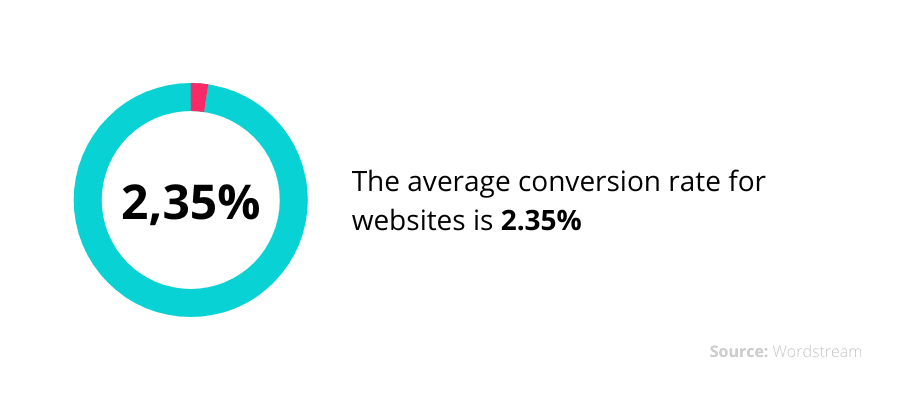
According to the statistics, the average website conversion is 2.35%. Of course, for different industries and devices, it is a bit different. BUT still, the average conversion rate seems to be a bit depressive, doesn’t it?
How conversion rate is calculated?
The conversion rate formula is easy to be calculated. CRV is the proportion of the total number of conversions to a total number of sessions or visits *, multiplied by 100%. For example, if your landing page has been visited by 1000 guests and only 30 had filled the form, your conversion rate would be 3%.
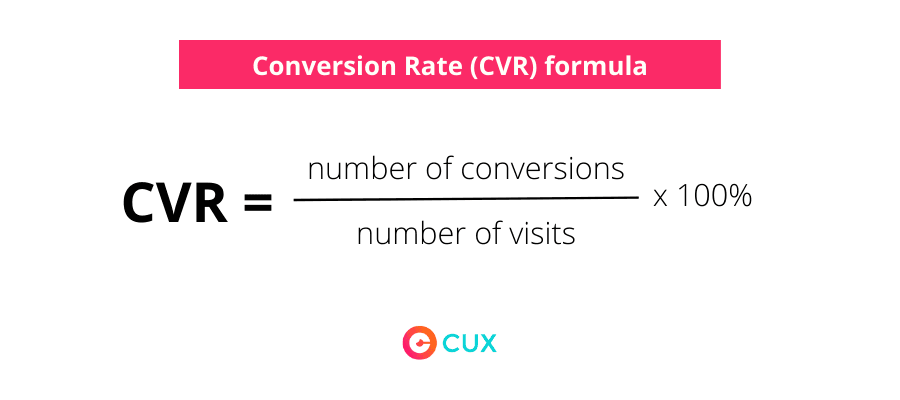
*The divider depends on how you want to measure traffic and what exactly you are defining as your conversion rate event.
It is common to think about conversion only as a purchase, but it is much more. Conversion in CUX definition is all activities and factors that lead to a purchase, visiting the website, engagement time, clicking CTA, etc.
Conversion rate events can be considered as:
- making a purchase,
- visiting contact site,
- form filling,
- signing up for a newsletter subscription,
- depth of scrolling (e.g., user scrolled 75% of the page),
- creating an account,
- signing up for a free trial version,
- clicking in a call to action.
What is considered a good conversion rate?
It’s hard to tell what is a good conversion rate, since it depends on the type of industry. Currently, the highest average conversion rate is in the Catering & Restaurant sector (9.8%). In second place ranked Media & Entertainment (7.9%). The lowest CRV has been noted in Real Estate (2.6%) and Agencies (2.4%) sectors.
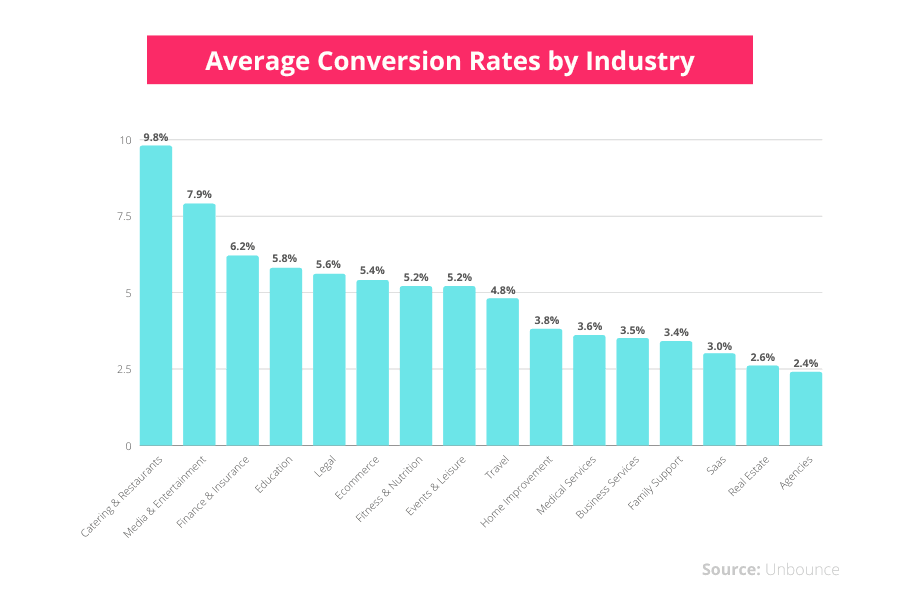
We should consider that there always be some goods and services with a lower conversion rate, like travel, home furnishings, or real estate. It isn’t common for an average person to go on holiday 4 times a year or rent a new apartment each month. It takes time to afford it.
What is interesting, only 22 percent of businesses are satisfied with their conversion rates. So don’t worry if your conversion rates do not meet your expectations – you’ll soon find out how to increase them.
Why do you need to increase your conversion rate?
As we talked about conversion rate events and CRV itself, you can immediately come up with the conclusion that it has a strong connection with your business revenue. It’s a fundamental thing when you want to check if your strategy and marketing activities are working. Without a conversion rate, you won’t be able to do that.
Read also: Increase conversion with heatmaps
How to increase conversions by combining SEO and UX
How to increase conversions with the company blog
The reason that stands behind the increasing conversion rate is boosting revenue. BUT Rome wasn’t built in a day, and the same happens to your conversion rate. There is plenty of space to optimize it and even after that, you can iterate it again, and again, and again… As Dusty Bun and Susie Poo sang in the Stranger Things series, “It’s a never-ending story”!
So, if you want your website and business to succeed, start the conversion rate optimization (CRO) process.
Conversion rate optimization
Conversion rate optimization (in short, CRO) is the process of increasing current conversion rates by validating the hypothesis pulled out of analytics. The best way to process CRO is by running A/B tests and validating them. To do that you can use conversion rate optimization tools.
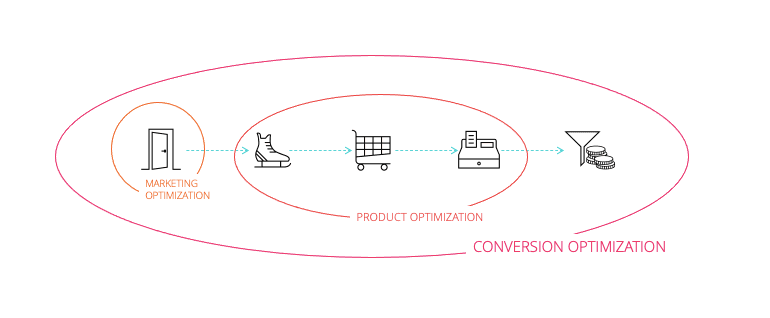
To achieve the highest and the fastest conclusions, you need to add to your A/B testing process an analytical tool that combines quantitative and qualitative data. Without it, you will be firing into the brown.
If you want to learn about how a/b tests work, what are they, and how to monitor their progress, read our article.
How to increase your conversion rate?
It’s become customary that to build a significant market advantage, you need to focus on your competition and their activities. It’s not necessarily true… What you should concentrate on are your customers and their problems. Always keep this in your mind because it’s the fundamental rule of conversion rate optimization.
You can increase the conversion rate by starting the CRO process. Below you can find a few examples of how to increase conversion rate, not necessarily only in eCommerce.
Reduce load time
The first thing you should check when you are in the conversion rate optimization process is the load time of your website. The faster, the better. The good load time takes from 0 to 4 seconds. It’s the period of time for the site to fully load all elements (text, images, and videos).
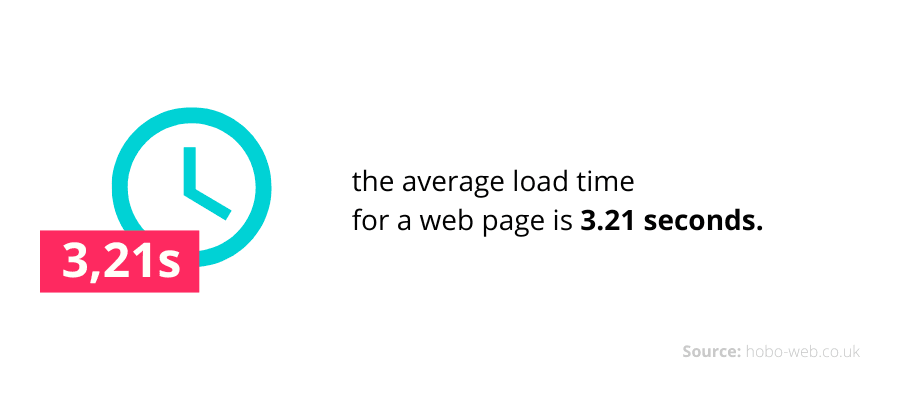
Statistically, eCommerce pages with load times between 0-2 have higher conversion rates than ones with longer load times. 40% percent of customers will abandon a web page if it takes more than three seconds to render.
Add various payment methods
71 percent of shopping carts are being abandoned, and one of the reasons for it is the lack of preferred payment methods. On the market, there are available over 200 options on how to pay. It gives a variety of options to meet customer expectations and needs in the making purchase process. Having 3 of the most common payment options can increase the conversion rate in sales even up to 71%.
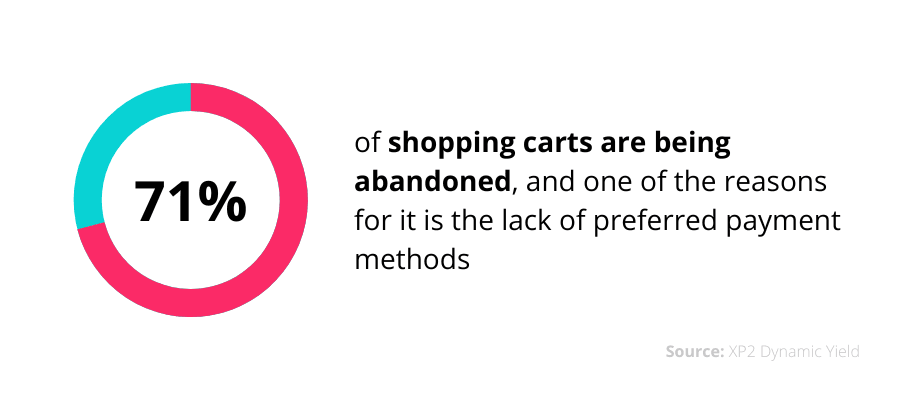
As you know, there are plenty of methods that can be added to your site but don’t worry. You don't have to apply every payment option. Rather, you should analyze what is the most preferred methods of payment for the market, target audience, or country you’re hitting.
Try to make the purchase process as easy as possible by having the right payment method option. Customers will thank you for that later!
Increase trust by taking care of social proof
What better way to convince your customer to buy a product or service from your site and build trust, than showing that other people have bought the same products or used the same services?
It's a real phenomenon of how social proof can increase conversion rates. It's been proven by worldwide businesses. 25% of visitors are more likely to convert now compared to pre-pandemic times, thanks to online reviews.
4 examples of using social proof to increase conversions
Customers Testimonials
Take advantage of your customers’ opinions and add them on your homepage or product pages.

Photos of customers with your product
Engage your customers to tag your brand on their social media. Use them as elements on your product pages to build trust and encourage purchasing. Potential customers identify themselves more with your average customer, they want to see products in real life. Rather than a model who has a professional photo shoot and long legs.

Customer base
Show your potential customer's existing one. Use logos of high profiles brands and companies that might be recognized by others.

Case studies
Case studies present to your potential customers how your company works. It’s a perfect example, of how you can sneak more details about the product and how it helped to achieve goals or fix problems.
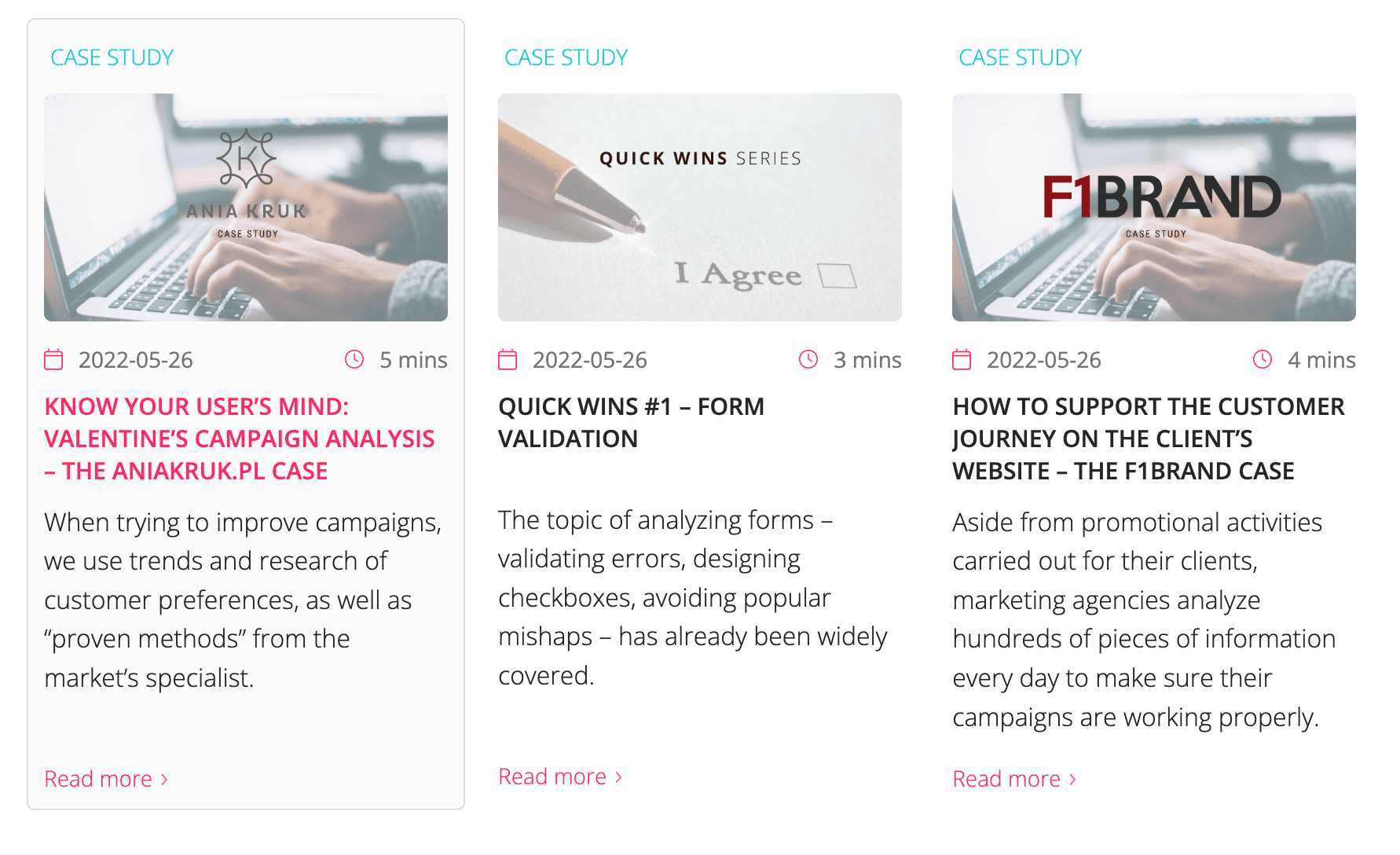
Shorten the number of fields in the form
Less is more. According to statistics, the perfect number of fields in the form is 3. But are we able to receive valuable pieces of information from such a number of fields? Or should we object and, add as many fields as we need to receive the necessary information? Is there a golden mean? The answer is YES!
Start by asking yourself questions about what is more worthwhile to your business – lead quantity or quality, and what information you need to ask. Then run A/B tests and see how reducing or adding fields will influence your conversion rates.
Focus on the value proposition
The value proposition is a promise to your potential customers about what they will achieve with your product or what issues it will solve. Your value proposition should communicate why your product is worthy to buy from you, and not someone else.
From VP, you can build the entire communication on your site – headliners, call to action, text, graphics, or bullet point lists. Good communication based on value proposition can increase conversion rates and decrease your landing pages bounce rates. That's how you make your company stand out!
How data analytics can increase conversion rate?
A lot of things might be done faster or better if we had the right tool or even knew one existed. That's where cux.io comes in. CUX allows you to quickly increase your conversion rate, even up to 68% overnight – see T-Mobile case study.
With CUX pre-analyzing experiences and identifying behavioral patterns, you’ll be able to discover the most valuable spots to improve your conversion rate or prevent them from decreasing. Remember, when we were talking about wandering in the fog? Never happens in CUX. With cux.io features, you will know exactly where to look for them and what to optimize.
CUX allows you to analyze user experience and behavior and make improvements based on gathering insights. With CUX features, you can save up to 5x time on eCommerce analytics.

CUX features – the key to successful conversion rate optimization
-
User Behavior Analysis – have you ever wondered what kind of emotions accompanies your users when they’re visiting your website? CUX does that! And what’s more, finds frustration and pain points.
-
Conversion Waterfalls – find the exact spots of conversion drops in the customer journey. With Conversion Waterfalls, there is no place for assumptions, you get a clear picture of users' funnels. With each step in CW, you get a selected list of Visit Recordings with users who dropped out.
-
Heatmaps – discover how people are experiencing your website on different devices and screen resolutions. Filter heatmaps results by the type of event: click, rage click, movement, zoom, or link and discover places for conversion drops!
-
Visit Recordings – unlike the competition, CUX concentrates on user activity throughout the entire visit, not a single session. It gives a whole picture of users' behaviors.
-
Pre-analysis & Alerts – get notifications whenever any significant changes occur in your projects! No need for constant checking of the app or data. You are always informed with CUX.
